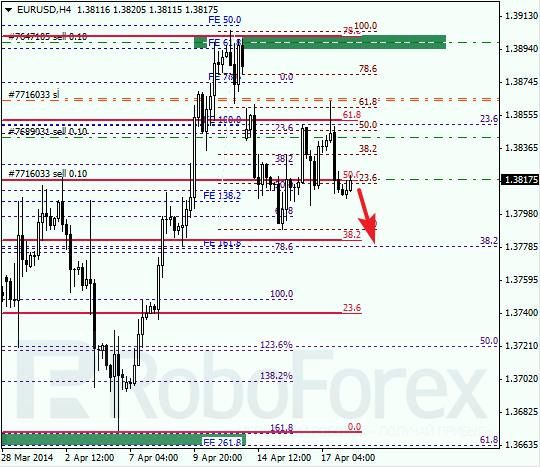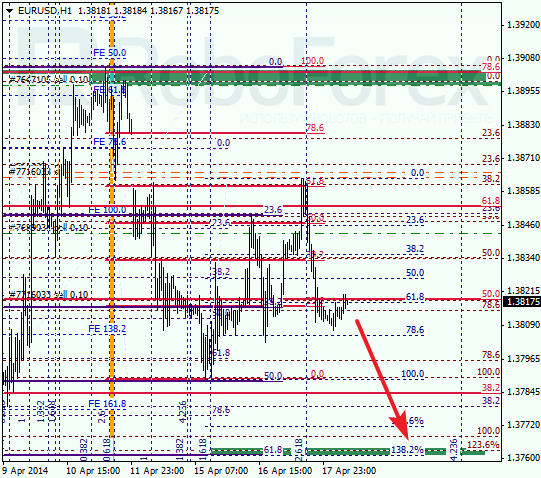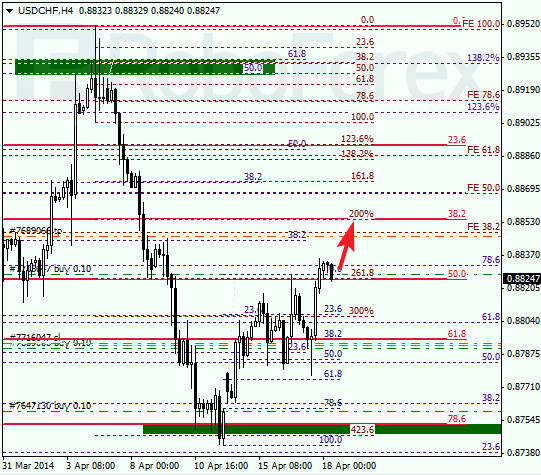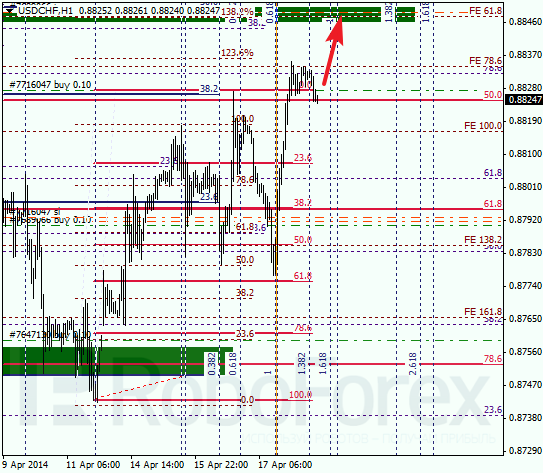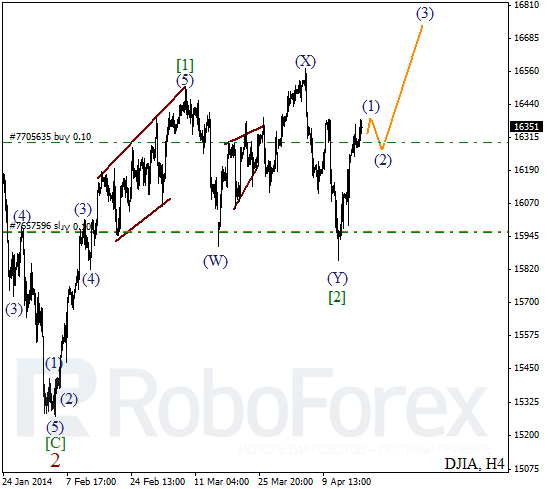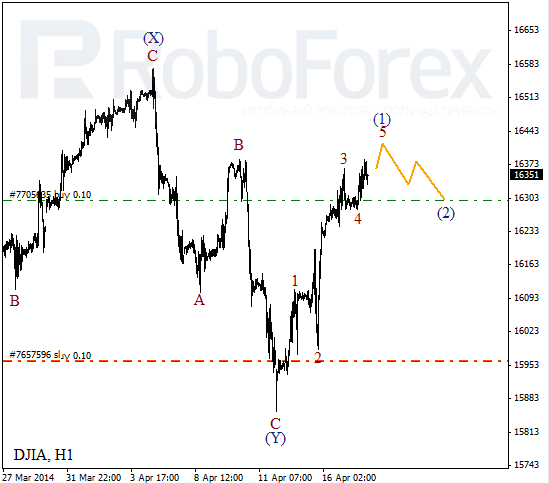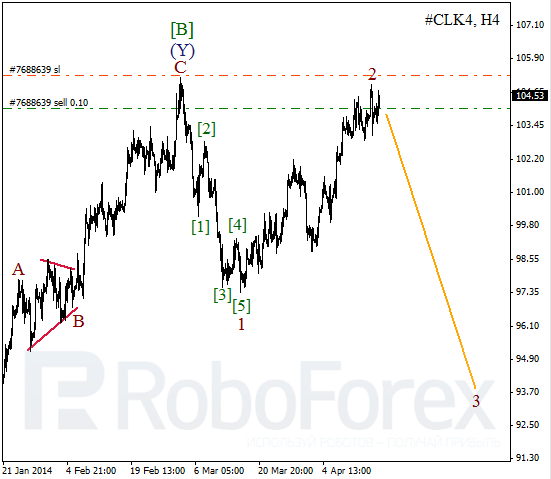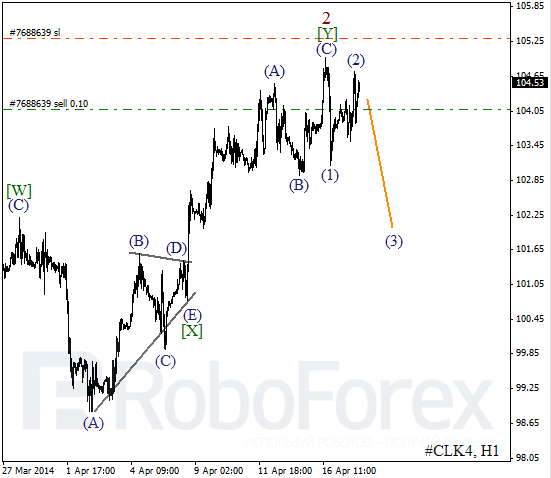Source: JT Long of The Energy Report (4/17/14)
http://www.theenergyreport.com/pub/na/do-you-practice-quality-of-life-investing-michael-berry-does
Energy and food will be hot commodities as emerging middle classes start buying cars and beef. That is why, in this interview with The Energy Report, Discovery Investing Founder Michael Berry explains the importance of quality of life investing. Oil and gas, uranium and fertilizer stocks are on sale now, but might not be in the years to come.
The Energy Report: When we last interviewed your son, Chris Berry, he advised to invest based on the reality of a growing, emerging market in China. That included both energy and agriculture sectors. Are you also bullish on quality of life-based (QOL) investing?
Michael Berry: I am bullish; I developed the QOL concept a few years ago. What I’m seeing is quite a few big institutions—life insurance companies, family offices and money management companies—opening quality of life funds, although often with different names. They are beginning to recognize that as people move from the country to the cities in the emerging markets, and a new middle class develops, they will want more animal-based protein—chicken, fish, pork, beef and eggs. By 2030, once the credit cycle is corrected, I’m very bullish that quality of life funds are going to push forward. I think both the energy and the agriculture sectors are going to be interesting investment areas.
Chris and I have been spending a fair amount of time lecturing and presenting our QOL thesis and talking to investors and companies that have big stakes in this area. When you have 2 billion (2B) new consumers who want to live longer, healthier and easier, and who want better food, education and transportation, energy and nutrition will be key sectors.
TER: Does that mean that you are not worried about reports of slowing economic growth in China?
MB: I’m not worried about the long term because growth in China must slow. As economies expand, growth, by definition, slows. I’m not saying we won’t have serious economic headwinds in the next few years. We have talked before about the impact of possible deflation in the metals sector. But ultimately, that will be overcome because members of the new and much larger middle class want to live better and they want to consume.
China and India are changing their models from export-driven economies to consumer-based economies. That might take a decade or more, but the Chinese government is transforming it now. China has its own credit problems that it must solve. Same goes for the United States. Regardless of the timeframe, energy and food are still keys to a higher quality of life. We are prepared to watch as this secular tsunami develops, and then take investment positions.
TER: A big part of that energy play is oil and gas. When we last interviewed Matt Badiali, he was very excited about shale plays because, “these are real companies producing real profits” compared to gold explorers. What’s your approach to the controversial shale oil sector?
MB: Shale oil is a great diversification play for all of your readers in either the metals sector or the energy sector. You want to spend some time and understand the Bakken and also the Eagle Ford Shale. I’m very bullish on the Eagle Ford. It is clear fracking technology works. The biggest oil producers are involved, including Freeport-McMoRan Copper & Gold Inc. (FCX:NYSE).
Specifically, I like the royalty play in the Eagle Ford Shale Trend. The U.S. is a great country because if you own the land, you own all of the mineral rights beneath the land. We are the only country in the world where private citizens can own the minerals. The first 25% of oil that comes out of the land comes to the property owner, with no working interest risks and no environmental risks. The royalty owner pays only his share of the taxes; other than the cost of purchasing the royalty, he has no capital costs associated with drilling and completing the wells, or monthly lease operating expenses.
It is a great dividend-like diversifier for people who are looking for yield and a hedge against inflation. Just in the Eagle Ford Shale alone, there have been approximately 9,000 wells drilled since its discovery in 2008, with a 97% success rate. The current average estimated ultimate recovery (EUR) per well is 351,000 barrels of oil equivalent (351 Mboe). This recovery rate appears to be increasing over time as the technology improves. There will likely be an additional 200,000 wells drilled in the Eagle Ford over the next 50 years.
TER: So you’re not worried about decline rates.
MB: Not at all, because the initial rate of production is about 1,000 barrels per day (1 Mbbl/d) or more. First-year declines are 76%, second-year declines are 35%, 20% for the third year and 6% or less thereafter. So 40% of the total estimated ultimate reserves are produced in the first five years, then it tapers off. But a company like EOG Resources Inc. (EOG:NYSE) is now drilling one well on 20 acres. There is lots of potential, even though the decline rates are steep and it’s $10 million ($10M) to drill a well. When you’re producing 11,500 bbl/d at $100/barrel ($100/bbl), the economics work. The risk is if oil were to fall to $40 or $50/bbl.
TER: What are some other companies that have been active in the shales?
MB: Penn Virginia Corp. (PVA:NYSE) and Carrizo Oil & Gas Inc. (CRZO:NASDAQ) are producers that know where the profitable properties are located.
TER: My understanding is that Penn Virginia is buying on the outskirts of the Eagle Ford, where the property is cheaper. Is that working?
MB: The Eagle Ford Shale in Texas is more than 450 miles long and 50 miles wide. Moving west to east across south Texas, it is about 300 feet thick, thinning to 50 feet thick around central south Texas, and thickening to 1,000 feet as you move east, to the Eaglebine. That is why the best properties may not be found in the heart of the Eagle Ford, but to the east, on the fringes. The whole oil window play is moving east across Texas now. In fact, the Eagle Ford probably goes all the way into Florida. Penn Virginia is doing a great job of buying properties before they are overpriced. Carrizo is another great operator in the Eagle Ford Shale. There is a lot of potential here, and I’m just talking about Texas. I’m not talking about North Dakota, the Bakken, Pennsylvania or any of the other ones that are there. The future energy scenario for the U.S. is very positive.
TER: You mentioned that you think we’re about a year from uranium prices returning to higher levels. What would be the catalyst behind that?
MB: The spot price of uranium has fallen to around $32.50/pound ($32.50/lb). That can’t last with the rest of the world building out its nuclear power capability. I don’t know what Japan and Germany will do, but China and India are building reactors as we speak. I think we’re a year away from a realization that the Russians aren’t going to be our friends anymore when it comes to sending us uranium to be down blended for commercial reactors. We are going to need more uranium soon and that means higher prices to make some of the great deposits in the Athabasca economic and hence mineable.
Chris and I attended the SME Conference on uranium in Corpus Christi in October and recognized the difference between the successful companies and those that might not survive to see higher prices. Presently, what’s really important about uranium is being able to produce it cheaply. So the in situ leach (ISL) producers are the place to be right now.
TER: What companies have that ISL advantage?
MB: One is Uranerz Energy Corp. (URZ:TSX; URZ:NYSE.MKT). The company recently announced that the NRC has allowed Uranerz to commence production at Nichols Ranch in Wyoming. Production means cash flows and liquidity. U3O8 Corp. (UWE:TSX; UWEFF:OTCQX) has Colombian and Argentinian assets of uranium and vanadium. It’s an earlier stage play that looks promising. I met with management at PDAC in March. I like Ur-Energy Inc. (URE:TSX; URG:NYSE.MKT) because it has been producing via ISL in Wyoming for several months. ISL is particularly economic in a low uranium spot and term market. Uranium Energy Corp. (UEC:NYSE.MKT) interests me because it’s a domestic producer.
We’ve had some wonderful discoveries in the Athabasca led by Fission Uranium Corp. (FCU:TSX.V). These will require a higher uranium price to enhance the economics of hard rock discoveries. We think we will require $50/lb or $60/lb uranium before we start to gain share price momentum in the sector.
TER: Despite the low uranium prices, some of the companies have had some traction in the market. Uranerz did an update on the Nichols Ranch ISL project and the stock is way up from the beginning of the year. What happened there?
MB: First of all, it is an ISL producer, which is where you probably want to be invested today. Second, I think there’s been a lot of hype in the sector itself, generating some behavioral excess in some of these stocks. Having said that, I think the ISL producers are probably going to hold their value as we go forward.
TER: You mentioned that energy and food are directly related. What fertilizer companies could benefit from an increased need for food?
MB: We’re going to see a massive need for new fertilizer development globally. The three things farmers need to grow more food on less land are nitrogen, phosphorus and potassium.
There’s an advanced phosphate developer in Quebec that I like called Arianne Phosphate Inc. (DAN:TSX.V; DRRSF:OTCBB; JE9N:FSE). It currently has an NI 43-101 feasibility study completed. Arianne has a very high-grade phosphate deposit at Lac ŕ Paul in Quebec. The feasibility study shows a 25-year mine life with annual production of 3 million tones (3 Mt) of phosphate concentrate with a grade of 38.6% P2O5. There are many zones still to explore that will expand the resource. The feasibility study shows that after beneficiation, the resource will provide among the highest P2O5 grades in the world.
I think the company is an attractive takeover target given its location in Quebec, the vertical integration of the phosphate market and the very strong economics of the project. The phosphate market is comprised of a handful of big players, including OCP in Morocco (state owned), PhosAgro (PHOR:LSE) in Russia and The Mosaic Co. (MOS:NYSE) in the U.S.
TER: I understand Arianne has some permitting that it expects to get approved this year. Will that be an important catalyst?
MB: That should be a very important catalyst. The stock went up to CA$1.69, and it’s backed off to CA$1.15. I think it’s way too cheap right now. I think it’s a stock that you want to own now. It’s a big resource of 590 Mt of 7.13% Measured and Indicated ore. I don’t think it will have any major problems on the permitting side. The one area it’s going to have to deal with is the capitalization of the project. It may require a capex of $1.21B.
On the other hand, it certainly has a really strong following, with a very low estimated production cost of $93.70 per tonne. The average selling price will likely be around $200 per tonne. This is a wonderful margin. Furthermore, it’s a commodity that is relatively scarce in North America.
TER: You mentioned that potash has been much more volatile lately. What are some companies you like that could survive in a depressed potash market?
MB: The good news is the potash market is probably pretty close to a bottom right now because of big producers flooding the market. As the middle class consumer grows worldwide, I think we’re going to have much more demand for fertilizer, particularly overseas.
A Canadian company called Allana Potash Corp. (AAA:TSX; ALLRF:OTCQX) has a big, low-cost potash project in Ethiopia that is going fertilize Africa and some of Asia. It has an offtake agreement with Israel Chemicals Ltd. (ICL:TASE) that could be transformational for the fertilizer space itself. This 80% offtake agreement places Allana in a different league from its competitors.
These are the Discovery Investments we love to understand.
The stock is in strong hands; Liberty Metals & Mining, an offshoot of an insurance company, is a big shareholder. If I were investing in potash companies, I would pick some producing companies overseas to supply demand overseas. Allana fits that bill, and the stock is trading for CA$0.38.
Some investors are nervous about Ethiopia, but the asset is there and the management is excellent. I know CEO Farhad Abasov very well. I’ve worked with him on other situations. I will be shortly travelling to Ethiopia to visit the Allana site.
The fertilizers are going to be very strong over the next few years as demand for protein skyrockets from the urbanization of the emerging world’s new middle class. Be patient and select good management with quality assets and sustainable business plans.
TER: Any final advice for energy investors trying to get through the rest of 2014?
MB: Look at the shale plays. Look for royalty trusts on the shale plays, particularly the Eagle Ford in Texas. There are all kinds of new rules. You can even put royalties in your IRA now. We haven’t gotten very much yield from the junior miners. It’s time to start rewarding yourself.
TER: Thank you for all the ideas.
MB: Thank you.
From 1982–1990, Michael Berry served as a professor of investments at the Colgate Darden Graduate School of Business Administration at the University of Virginia, during which time he published a book, “Managing Investments: A Case Approach.” He was the Wheat First Professor of Investments at James Madison University. He has managed small- and mid-cap value portfolios for Heartland Advisors and Kemper Scudder. His publication, Morning Notes, analyzes emerging geopolitical, technological and economic trends. He travels the world with his son, Chris, looking for discovery opportunities for his readers.
Want to read more Energy Report interviews like this? Sign up for our free e-newsletter, and you’ll learn when new articles have been published. To see a list of recent interviews with industry analysts and commentators, visit our Streetwise Interviews page.
DISCLOSURE:
1) JT Long conducted this interview for Streetwise Reports LLC, publisher of The Gold Report, The Energy Report, The Life Sciences Report and The Mining Report, and provides services to Streetwise Reports as an employee. She owns, or her family owns, shares of the following companies mentioned in this interview: None.
2) The following companies mentioned in the interview are sponsors of Streetwise Reports: Fission Uranium, Uranerz, Arianne. Streetwise Reports does not accept stock in exchange for its services.
3) Michael Berry: I own, or my family owns, shares of the following companies mentioned in this interview: Arianne Phosphate Inc. I personally am, or my family is, paid by the following companies mentioned in this interview: None. My company has a financial relationship with the following companies mentioned in this interview: Arianne Phosphate Inc. and Allana Potash Corp. I was not paid by Streetwise Reports for participating in this interview. Comments and opinions expressed are my own comments and opinions. I had the opportunity to review the interview for accuracy as of the date of the interview and am responsible for the content of the interview.
4) Interviews are edited for clarity. Streetwise Reports does not make editorial comments or change experts’ statements without their consent.
5) The interview does not constitute investment advice. Each reader is encouraged to consult with his or her individual financial professional and any action a reader takes as a result of information presented here is his or her own responsibility. By opening this page, each reader accepts and agrees to Streetwise Reports’ terms of use and full legal disclaimer.
6) From time to time, Streetwise Reports LLC and its directors, officers, employees or members of their families, as well as persons interviewed for articles and interviews on the site, may have a long or short position in securities mentioned. Directors, officers, employees or members of their families are prohibited from making purchases and/or sales of those securities in the open market or otherwise during the up-to-four-week interval from the time of the interview until after it publishes.
Streetwise – The Energy Report is Copyright © 2014 by Streetwise Reports LLC. All rights are reserved. Streetwise Reports LLC hereby grants an unrestricted license to use or disseminate this copyrighted material (i) only in whole (and always including this disclaimer), but (ii) never in part.
Streetwise Reports LLC does not guarantee the accuracy or thoroughness of the information reported.
Streetwise Reports LLC receives a fee from companies that are listed on the home page in the In This Issue section. Their sponsor pages may be considered advertising for the purposes of 18 U.S.C. 1734.
Participating companies provide the logos used in The Energy Report. These logos are trademarks and are the property of the individual companies.
101 Second St., Suite 110
Petaluma, CA 94952
Tel.: (707) 981-8204
Fax: (707) 981-8998
Email: [email protected]
